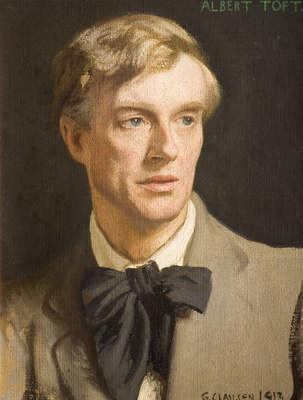
Albert Toft was a British sculptor.
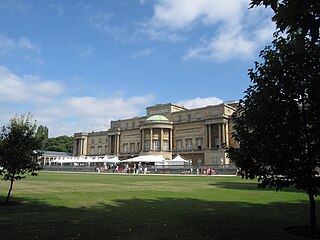
Buckingham Palace Garden is a large private park attached to the London residence of the British monarch. It is situated to the rear (west) of Buckingham Palace, occupying a 17-hectare (42-acre) site in the City of Westminster and forms the largest private garden in London. It is bounded by Constitution Hill to the north, Hyde Park Corner to the west, Grosvenor Place to the south-west, and the Royal Mews, Queen's Gallery, and Buckingham Palace itself to the south and east.
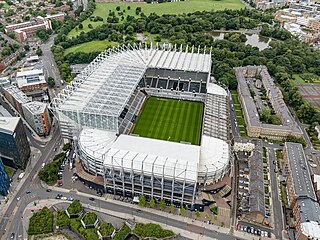
St James' Park is a football stadium in Newcastle upon Tyne, England. It is the home of Newcastle United. With a seating capacity of 52,350 seats, it is the 8th largest football stadium in England.

Lingfield is a village and civil parish in the Tandridge district of Surrey, England, approximately 23 miles (37 km) south of London. Several buildings date from the Tudor period and the timber-frame medieval church is Grade I listed. The stone cage or old gaol, constructed in 1773, was last used in 1882 to hold a poacher.

Albert Square is a public square in the centre of Manchester, England. It is dominated by its largest building, the Grade I listed Manchester Town Hall, a Victorian Gothic building by Alfred Waterhouse. Other smaller buildings from the same period surround it, many of which are listed.
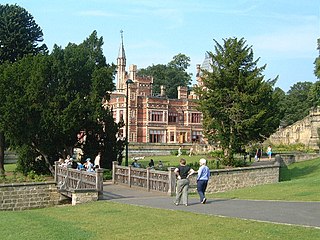
Saltwell Park is a Victorian park in Gateshead, Tyne and Wear, England. Opened in 1876, the park was designed by Edward Kemp and incorporates the mansion and associated grounds of the Saltwellgate estate owner, William Wailes, who sold his estate to Gateshead Council for £35,000. Upon opening, it became known as "The People's Park". The park was expanded in 1920 when the council purchased the adjacent gardens to the Saltwell Grove estate and added these to the park. This extended the park's total size to 55 acres (22 ha). Towards the end of the 20th century, the park had fallen into disrepair, but between 1999 and 2005, it was subject to a £9.6 million restoration project, funded collaboratively by the Heritage Lottery Fund and Gateshead Council and is now host to around 2 million visitors per year.
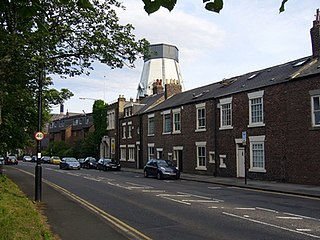
Spital Tongues is a district of Newcastle upon Tyne, located due north-west of the Newcastle City Centre. Its unusual name is believed to be derived from spital – a corruption of the word hospital, commonly found in British place names - and tongues, meaning outlying pieces of land. North of Spital Tongues is the Town Moor, while Castle Leazes and Leazes Park are to the East.

The Swinton Estate is a large privately owned estate in North Yorkshire, England. It comprises some 20,000 acres (8,100 ha) of countryside in the Nidderdale Area of Outstanding Natural Beauty, extending 10 miles (16 km) west from the River Ure near Masham. The estate includes Swinton Park, the seat of the Danby family and of the Cunliffe-Lister family, an English country house in Swinton near Masham. It is set in 200 acres (81 ha) of parkland, lakes and gardens. The house is a Grade II* listed building, and now operates as the 42-bedroom Swinton Park Hotel.

The Victoria Tunnel is a subterranean wagonway that runs under Newcastle upon Tyne, England, from the Town Moor down to the River Tyne. It was built between 1839 and 1842 to transport coal from Leazes Main Colliery in Spital Tongues, to riverside staithes (jetties), ready for loading onto boats for export.
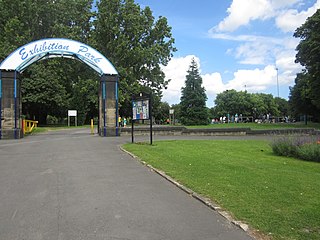
Exhibition Park is a public park connected to the south-eastern corner of the Town Moor, Newcastle upon Tyne, England. The park is home to numerous facilities including sports areas, a boating lake, playgrounds and a skatepark.

The Royal Victoria Infirmary (RVI) is a 673-bed tertiary referral hospital and research centre in Newcastle upon Tyne, England, with strong links to Newcastle University. The hospital is part of the Newcastle upon Tyne Hospitals NHS Foundation Trust and is a designated academic health science centre.
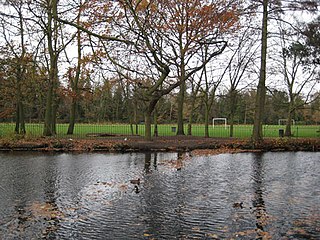
Belair Park is a park located in the West Dulwich part of the London Borough of Southwark, southeast London, England. The park grounds once belonged to Belair House, a country villa built in Adam style that is now a Grade II listed building. There are also two other Grade II listed structures within the park: the lodge and entrance gate, and an old stable building.
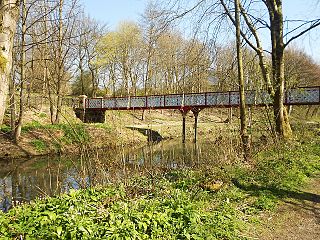
Queen's Park is a roughly circular 22 acres (8.9 ha) Victorian park lying on sloping ground to the north-west of Bolton town centre, in Greater Manchester, England. Opened as Bolton Park on 24 May 1866 by Lord Bradford it was renamed in 1897 in honour of Queen Victoria's Diamond Jubilee.

East Park is a major park of about 120 acres (49 ha) situated on the Holderness Road in Hull, East Riding of Yorkshire, England. East Park is registered a Grade II listed site by English Heritage. It is the largest public park in Hull and is often used for large open-air venues such as concerts and the annual Hull Show.

Formerly called the People's Park, Wolverhampton's West Park was opened on 6 June 1881.

The Leazes Park Synagogue is a former synagogue in Leazes Park Road, Newcastle upon Tyne, England.

Monument is an electoral ward and area of Newcastle upon Tyne. It was established as an electoral ward in 2018. It takes its name from Grey's Monument. It replaced most of Westgate ward, parts of South Jesmond and some of Ouseburn.
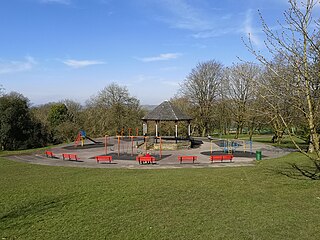
Scott Park is a public park in Burnley, Lancashire. It covers 7.9 hectares and was opened in 1895. Located south of the town centre, attractions include tennis courts, a children's play area, a bandstand, and bowling greens.

Victoria Park is a public park in Tunstall, in Stoke-on-Trent, Staffordshire, England. It is owned and operated by Stoke-on-Trent City Council. Few significant changes have been made since the early 20th century; it is listed Grade II in Historic England's Register of Parks and Gardens.





















